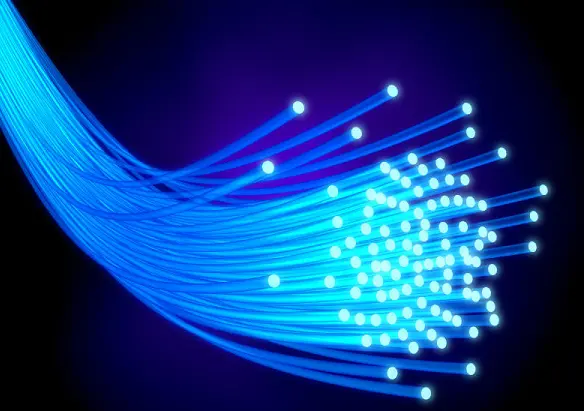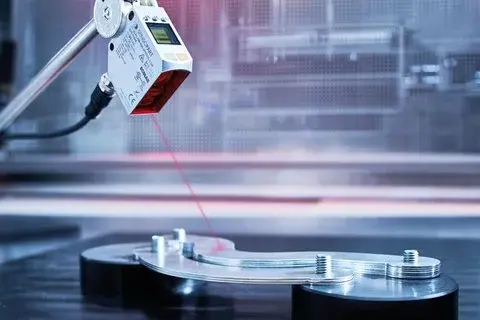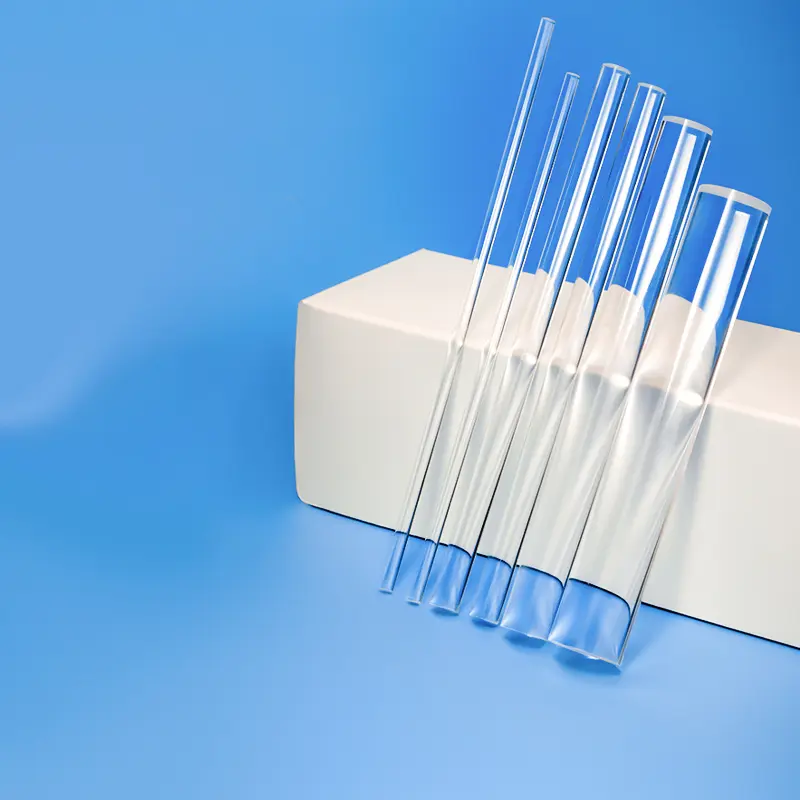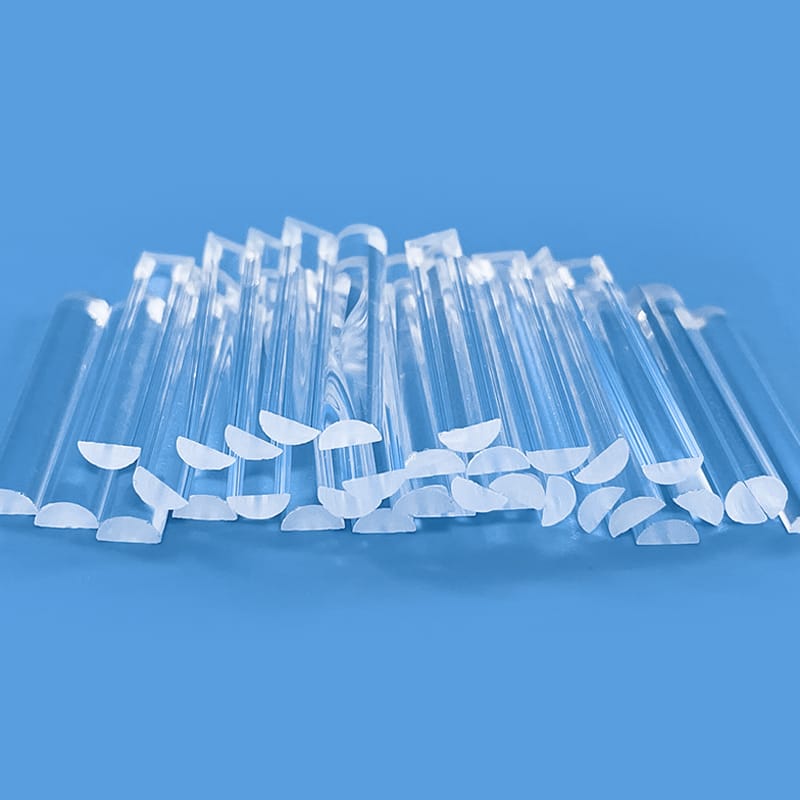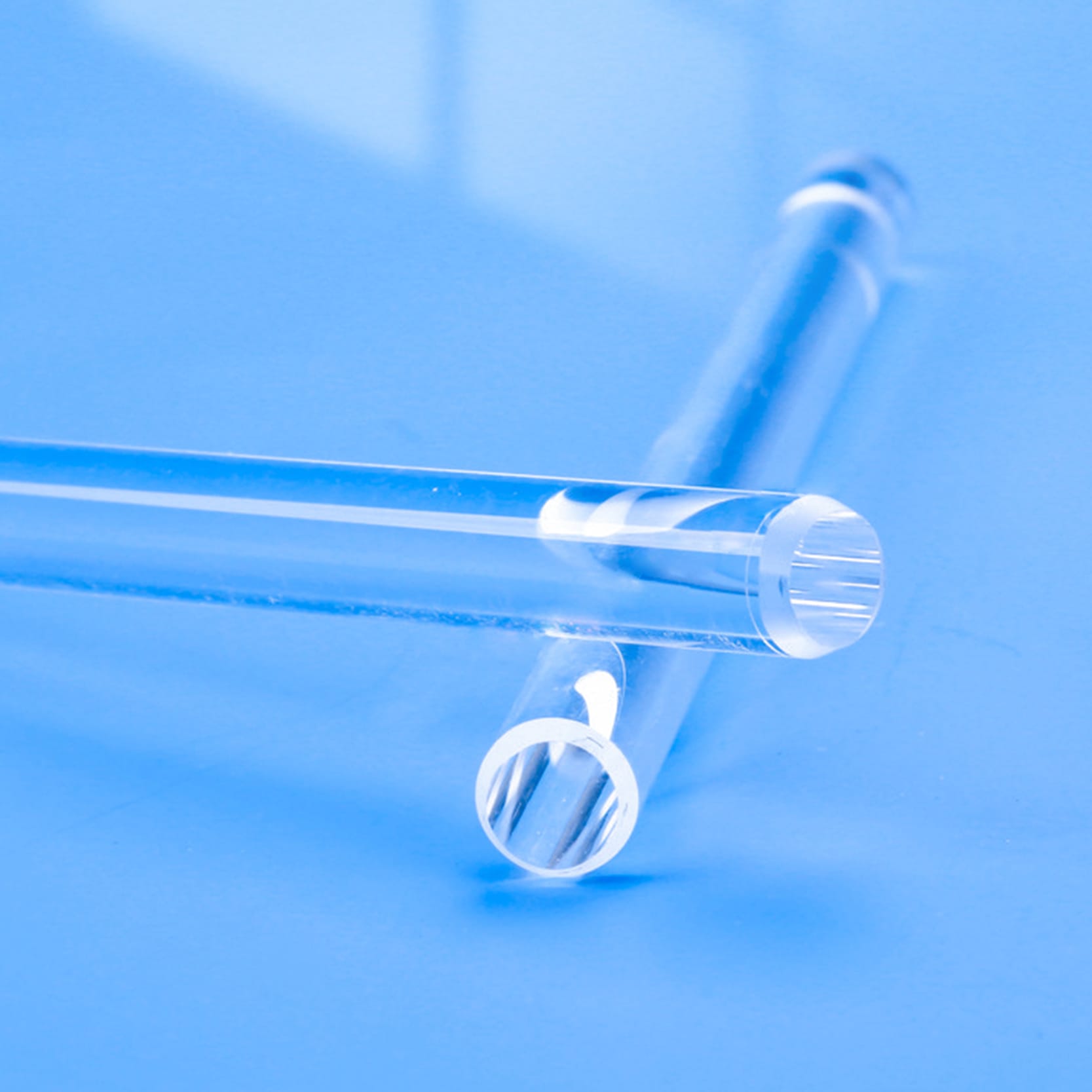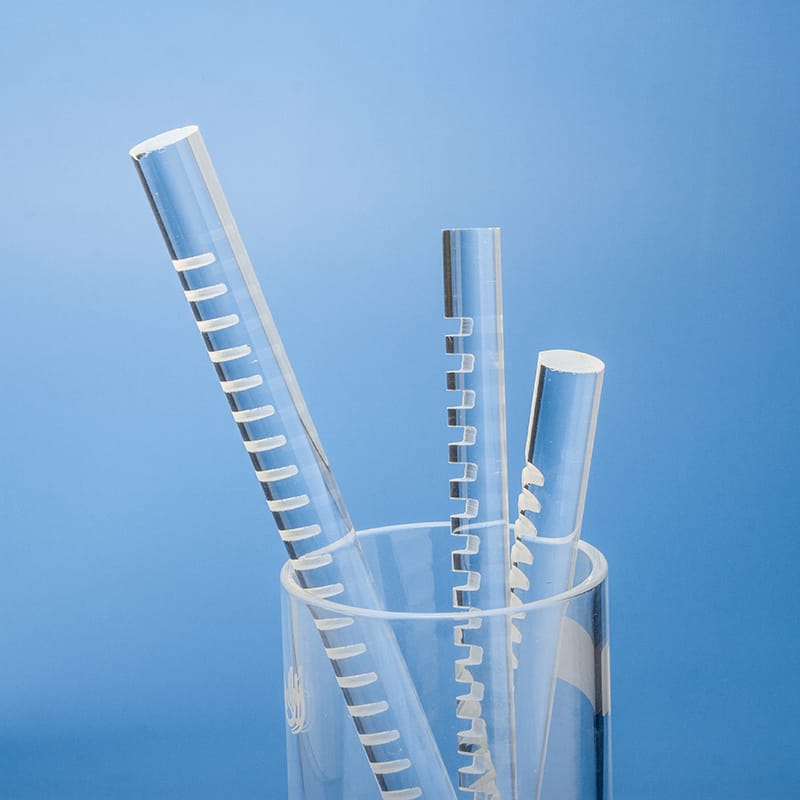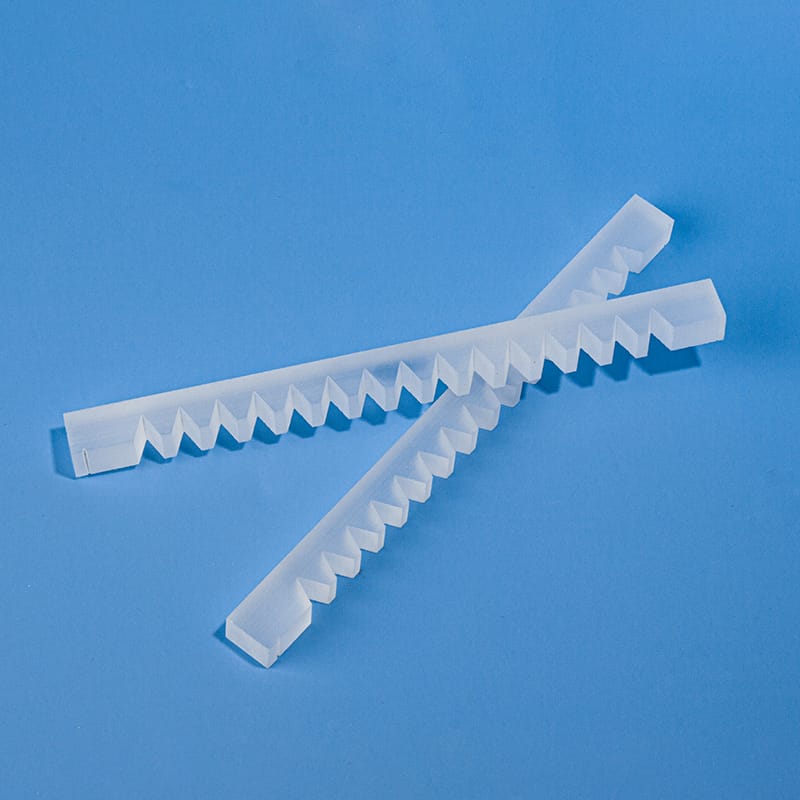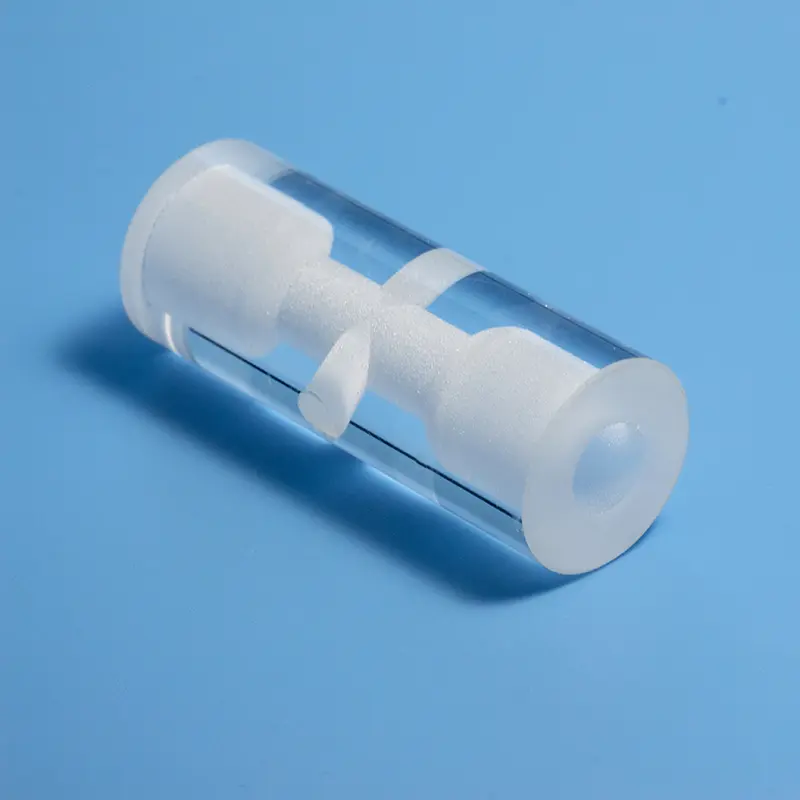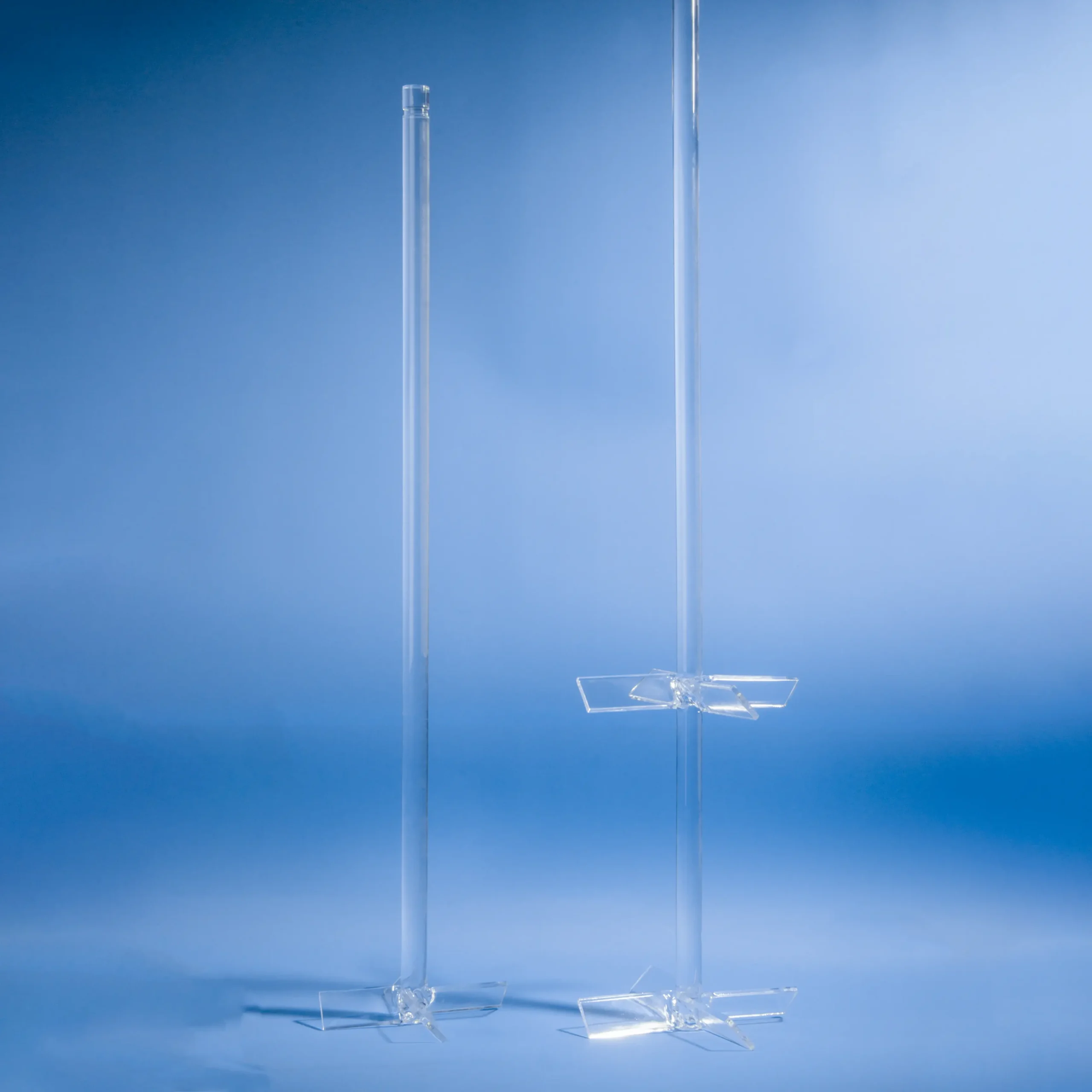当社の高精度石英角度付き導光ロッドは、効率的な光透過と再指向を実現するため、45度表面を特長としています。高純度溶融石英製で、優れた紫外線(UV)透過率、熱安定性、耐薬品性を提供します。精密な光路誘導が必要な光学、分析、医療システムに最適であり、お客様の特定の設計ニーズに合わせてカスタム角度や寸法もご用意できます
| 直径 | 長さ |
|---|---|
| 10mm | 300mm |
| 10mm | 600mm |
| 12mm | 300mm |
| 12mm | 600mm |
| 14mm | 300mm |
| 14mm | 600mm |
| 15mm | 300mm |
| 15mm | 600mm |
| 15mm | 1000mm |
| 16mm | 300mm |
| 16mm | 600mm |
| 16mm | 1000mm |
| 16mm | 1200mm |
| 18mm | 300mm |
| 18mm | 600mm |
| 18mm | 1000mm |
| 18mm | 1200mm |
| 20mm | 300mm |
| 20mm | 600mm |
| 20mm | 1000mm |
| 20mm | 1200mm |
| 22mm | 300mm |
| 22mm | 600mm |
| 22mm | 1000mm |
| 22mm | 1200mm |
| 25mm | 300mm |
| 25mm | 600mm |
| 25mm | 1000mm |
| 25mm | 1200mm |
| 28mm | 300mm |
| 28mm | 600mm |
| 28mm | 1000mm |
| 28mm | 1200mm |
| 30mm | 300mm |
| 30mm | 600mm |
| 30mm | 1000mm |
| 30mm | 1200mm |
| 32mm | 300mm |
| 32mm | 600mm |
| 32mm | 1000mm |
| 32mm | 1200mm |
| 35mm | 300mm |
| 35mm | 600mm |
| 35mm | 1000mm |
| 35mm | 1200mm |
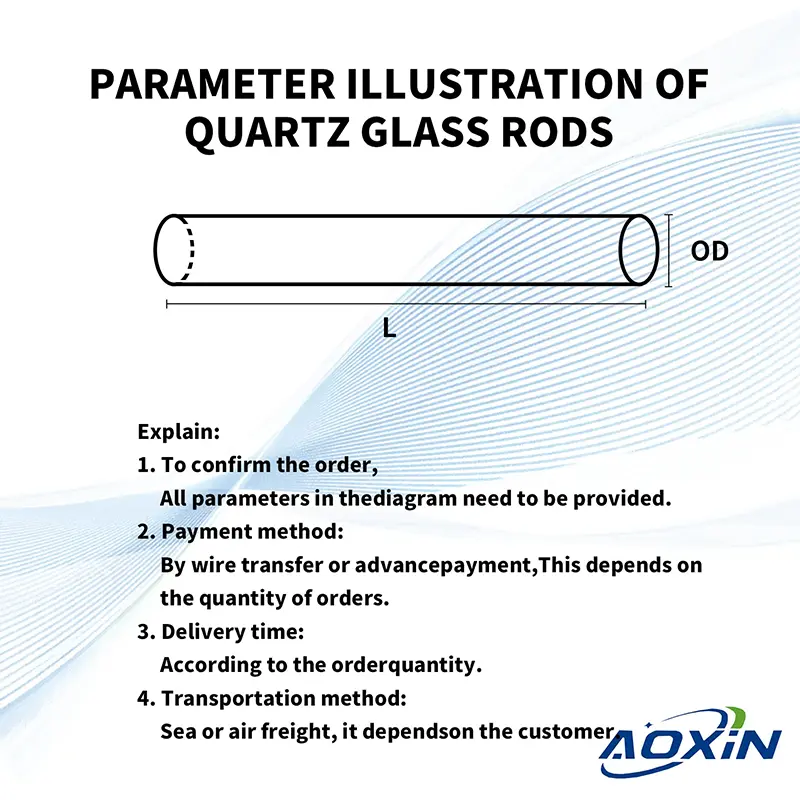
備考:
注文を確認するために
以下のパラメータが必須です:
① 外径 ② 長さ ③ 数量
- 支払い方法:
T/Tまたは前払いで
注文の数量によります。 - Delivery time:
According to the order quantity. - 配送方法:
海上または空中で
顧客によります。
| 特性内容 | 特性値 |
|---|---|
| SiO2 | 99.99% |
| 密度 | 2.2×10³ kg/cm³ |
| 硬度 | モース硬度 5.5~6.5; ヌープ硬度 570 (荷重100g) |
| 引張強度 | 4.8 × 10⁷ Pa (48 N/mm² または 48 MPa); 7,000 psi |
| 圧縮強度 | >1.1×10⁹ Pa (160,000 psi) |
| 熱膨張係数 | 5.5×10⁻⁷ cm/cm·°C (20°C-320°C) |
| 熱伝導率 | 1.4 W/m-°C |
| 比熱 | 670 J/kg-°C |
| 軟化点 | 1730度C(3146度F) |
| 徐冷点 | 1210度C(2210度F) |
| 歪点 | 1120度C(2048度F) |
| 使用温度 | 1200°C |
| 電気抵抗率 | 7×10⁷Ωcm (350°C) |
| サイズ | カスタマイズ対応 |
| ロゴ | ロゴのカスタマイズ対応 |
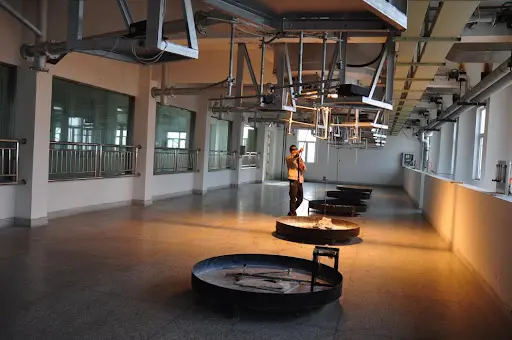
石英ロッドを製造する主な方法は2つあります:連続法とフレームフュージョン法(ガスフュージョン法とも呼ばれています)。
連続法: この方法では、クォーツサンドが金属製のクォーツクルーシブルの周囲に電気加熱要素が配置された炉の上部から供給されます。クォーツサンドは高温で溶融します。融解した材料は、クルーシブルの底にある成形オリフィスを通過し、棒、管、シート、またはその他の指定された製品形状を生成します。
フレームフュージョン法: この方法では、水素と酸素を使用して無色の石英クリスタルを溶融します。溶融材料は、炎の中で結晶粒子が溶けて凝固するプロセスを通じて石英ガラスに形成されます。次に、石英ガラスはさまざまな方法で炎から取り出され、所望の形状の石英ロッドに加工されます。
45度の角度デザイン
この光ガイドロッドは、特定の角度で切断または成形するプロセスを使用して、45度の角度面を作成しています。この設計は、特定の光学システムのニーズを満たすために、特定方向の光伝送または再指向を容易にします。
高光沢透過率
高純度の石英材料で作られたこの光ガイドロッドは、優れた光の透過性を示し、伝送中の光信号の高スループットを保証し、光損失を最小限に抑えます。
高温および腐食耐性
石英材料は、高温と腐食に対する優れた耐性を提供し、光ガイドロッドが厳しい環境条件でも安定した性能を維持できるようにします。
高精度加工
45度の斜め面の精度と仕上げを確保するために、このライトガイドロッドは精密加工およびポリッシングプロセスを経て、高精度光学要件を満たしています。
アプリケーションシナリオ
よくある質問
当社は、高純度石英ガラス部品の一貫製造を専門としております。主な製品ラインナップは以下の通りです:
石英管・石英棒: 幅広い直径と仕様。
石英プレート・ディスク: 光学および工業用途向けに精密に切断・研磨。
石英実験器具: ビーカー、フラスコ、ボートなど、標準品から特注品まで幅広い種類のガラス器具。
半導体グレード石英: 半導体製造用のプロセスチューブやキャリアなどの高純度部品。
特注加工部品: お客様固有の設計および仕様に合わせて、複雑な部品を製造できます。
はい。特注加工(カスタム加工)は、当社の事業の中核です。10年以上にわたる専門的な経験を活かし、お客様企業と提携し、専門的なOEM/ODMサービスを提供しております。当社の加工技術には、溶接、研削、穴あけ、研磨、曲げ加工、その他さまざまな精密加工技術が含まれており、お客様の厳密なご要望にお応えする部品を製造いたします。
品質は当社の製造プロセスにおいて最も重要です。当社はISO 9001:2015認証取得メーカーであり、当社のプロセスが国際的な品質管理基準を満たしていることを保証します。また、当社の製品は純度と性能に関して厳格なSGS試験を受けています。当社は高純度原材料(SiO2 99.998%まで)を使用し、優れた熱安定性、高温耐性、化学的不活性を持つ溶融石英および溶融シリカ製品を製造しています。
当社はプロセスを最大限に効率化しました:
RFQ(見積依頼)を提出:ウェブサイトのお問い合わせフォームまたはEメールで、技術図面、仕様、要件をお送りください。
迅速な対応: 数分以内に初回返信を、30分以内に詳細なご連絡を差し上げます。
設計・提案:24時間以内に詳細な設計提案と競争力のある見積もりをお届けします。
試作・生産:承認後、お客様の納期に間に合わせるため、迅速に試作から本格的な量産へと移行いたします。
Aoxin Quartzとの提携には、いくつかの重要なメリットがあります:
実証された専門知識:業界で10年以上の経験を持つ当社には、複雑な課題に取り組むための技術的知見があります。
One-Stop Solution: We manage the entire production process, from sourcing high-purity raw materials to fabricating and finishing complex components.
競争力のある価値:主要な石英生産拠点に位置することで、効率的なサプライチェーンと先進的な製造技術を活用し、競争力のある価格で卓越した品質を提供しています。
Dedicated Partnership: Over 90% of our clients become long-term partners. We are committed to your success through responsive service, reliable quality, and innovative solutions.


